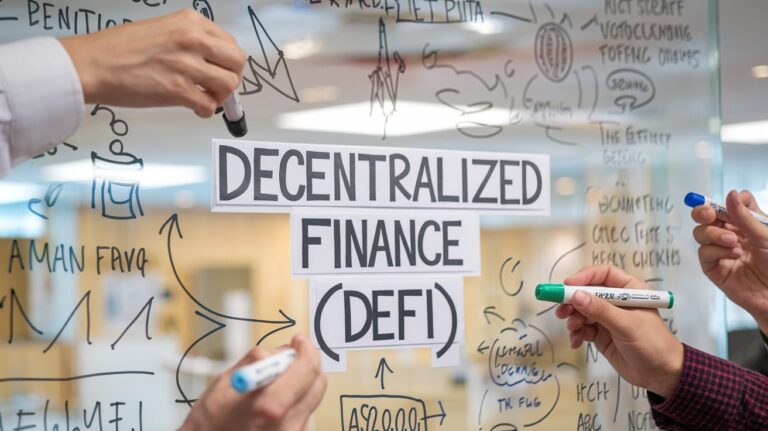Introduction
have gained significant attention in the digital world. This article aims to
demystify NFTs and explore NFTs and their future potential in various industries
including art, gaming, and real estate.
Understanding NFTs
NFTs are unique digital assets that represent ownership of a specific item or piece
of content, secured by blockchain technology. Unlike cryptocurrencies such as Bitcoin
or Ethereum, which are fungible and can be exchanged one for another, NFTs have distinct
properties that make them unique. This uniqueness has led to their popularity in various
sectors.
The Technology Behind NFTs
The backbone of NFTs is the blockchain, a decentralized digital ledger that records transactions
in a secure and transparent manner. Ethereum is the most widely used blockchain for NFTs,
employing smart contracts to create these unique tokens. Other blockchains like Binance Smart
Chain and Flow are also beginning to support NFT creation and trading.
Applications of NFTs
NFTs have a wide array of applications including digital art, music, virtual real estate,
gaming items, and even domain names. Artists can tokenize their work, allowing them to sell
directly to consumers without the need for intermediaries. This has opened up new revenue streams
for creators.
Current Trends in NFTs
The NFT market has seen explosive growth, with sales reaching billions of dollars. Major
brands and celebrities are entering the space, launching their own NFTs to connect with
fans and create new forms of merchandising. Trends such as fractional ownership and
gamified experiences are also gaining traction.
Celebrity and Brand Involvement
Celebrities from various fields, including music, sports, and fashion, are diving into the
NFT sphere. This trend has not only brought NFTs into the mainstream but has also sparked
curiosity among fans. Brands are also exploring NFTs as innovative marketing strategies,
using them to enhance customer engagement.
Environmental Concerns and Solutions
Despite their growth, NFTs have faced criticism regarding the environmental impact of blockchain
technology. Many users are becoming increasingly aware of the carbon footprint associated with
minting and trading NFTs. As a response, several organizations are looking for eco-friendly
solutions such as the use of proof-of-stake blockchains or carbon offset initiatives to mitigate
these concerns.
NFTs and Their Future Potential
As we look ahead, NFTs and their future potential remain vast and largely untapped. The
technology behind NFTs is continuously evolving, enabling new use cases and possibilities.
Here are some anticipated trends that could shape their future.
Tokenization of Real-World Assets
One of the most exciting prospects for NFTs is the tokenization of real-world assets.
This includes real estate, luxury items, and even stocks. By converting physical assets into
NFTs, ownership can be simplified, made fractionable, and more accessible to a wider audience.
This could revolutionize how we perceive asset ownership and investment.
Enhanced Interactivity in Gaming
The gaming industry is already experimenting with NFTs, with gamers able to buy, sell, and
trade in-game items as NFTs. In the future, we may see more immersive gaming experiences
where users can truly own their assets, which could foster a new economy within gaming
ecosystems.
Integration with the Metaverse
The advent of the metaverse is another frontier for NFTs. Virtual worlds will require users
to have unique identities and assets, which NFTs can provide. This could lead to an entirely new
way of social interaction and commerce, blurring the lines between the real and virtual worlds.
Regulatory Landscape
As NFTs become more mainstream, the need for regulation will grow. Governments worldwide
will have to devise frameworks to ensure protection for consumers and investors. How this regulatory
landscape shapes the use and acceptance of NFTs will play a critical role in their future growth.
Conclusion
The world of NFTs and their future potential is an exciting and rapidly evolving domain.
While challenges such as environmental concerns and regulatory frameworks exist, the
potential applications and innovations are boundless. As technology continues to advance, it is
vital for creators, investors, and consumers alike to stay informed and adapt to the
changes that lie ahead. Embracing the future of NFTs could unlock new opportunities and reshape
industries in ways we are just beginning to understand.







